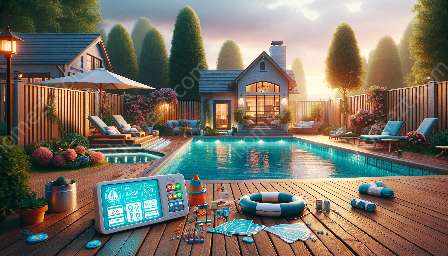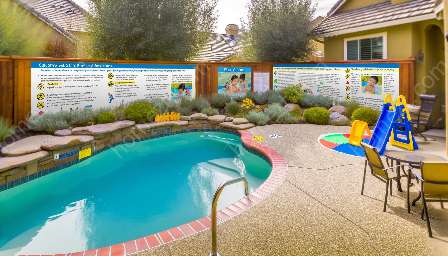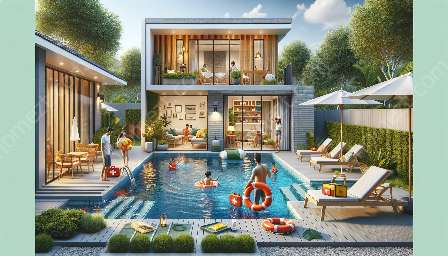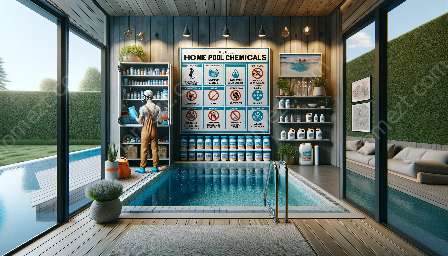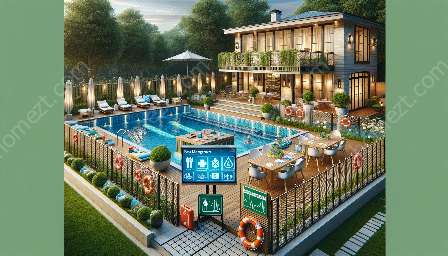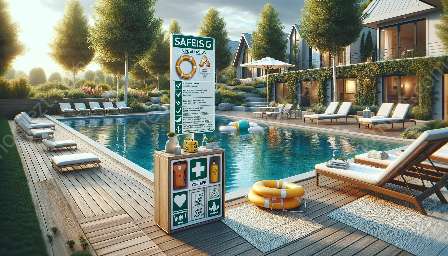Pool water safety and health is essential for maintaining a safe and enjoyable swimming environment at home. Properly balancing pool water not only promotes a healthy and hygienic experience but also contributes to overall home safety and security. To ensure a well-maintained pool, it is crucial to understand the importance of water chemistry and how it impacts the well-being of everyone using the pool.
Understanding Pool Water Chemistry
Pool water chemistry plays a vital role in maintaining the safety and health of those who use the pool. Properly balanced water prevents the growth of harmful bacteria and algae, as well as minimizes the risk of skin and eye irritation. The key parameters for maintaining a balanced pool include pH levels, alkalinity, calcium hardness, and sanitizer levels.
pH Levels
The pH level of pool water should be maintained within the range of 7.2 to 7.8. An improper pH level can lead to corrosion of pool surfaces and equipment, as well as cause skin and eye irritation. Regularly testing and adjusting the pH level is essential for maintaining water balance.
Alkalinity
Alkalinity serves as a buffer that helps stabilize the pH level. The recommended alkalinity range for pool water is 80-120 ppm (parts per million). Proper alkalinity levels help prevent rapid changes in pH, promoting a stable and comfortable swimming environment.
Calcium Hardness
Calcium hardness refers to the concentration of dissolved calcium in the water. It is important to maintain calcium hardness within the range of 200-400 ppm to prevent scaling on pool surfaces and the formation of cloudy water.
Sanitizer Levels
Sanitizers, such as chlorine or bromine, are vital for killing bacteria and maintaining water clarity. The ideal sanitizer levels should be maintained according to the manufacturer's recommendations to ensure effective disinfection while safeguarding the health of swimmers.
Importance of Home Pool Safety
When it comes to home pool safety, proper water balance is crucial for preventing accidents and promoting a secure swimming environment. In addition to maintaining water chemistry, other important aspects of home pool safety include secure fencing, pool covers, and adherence to safety regulations. Ensuring these features are in place can significantly reduce the risk of unauthorized access and improve overall home safety and security.
Fencing and Barriers
Installing a secure fence around the pool area is a fundamental safety measure for keeping young children and pets out of the water when unsupervised. The fence should meet local safety codes and be equipped with self-locking gates to prevent unauthorized access.
Pool Covers
Using a durable and well-fitted pool cover adds an additional layer of protection, especially during periods when the pool is not in use. Pool covers help prevent accidental falls and keep debris out of the water, contributing to a safer and cleaner pool environment.
Safety Regulations
Adhering to safety regulations, such as installing compliant drain covers and ensuring proper signage, adds an extra level of protection for everyone using the pool. Following these guidelines not only promotes safety but also helps homeowners avoid potential liabilities.
Enhancing Home Safety and Security
Properly maintaining a home pool and ensuring its safety align with the broader goal of enhancing overall home safety and security. By focusing on pool water balance and implementing the necessary safety measures, homeowners can create a safe and welcoming environment for their families and guests.
Surveillance and Alarms
Installing surveillance cameras and pool alarms can provide added security, helping homeowners monitor pool activity and detect unauthorized access. These systems can serve as valuable deterrents and aid in quick response to potential safety concerns.
Emergency Preparedness
Being equipped with essential safety and first aid kits near the pool area is crucial for addressing unexpected emergencies. Additionally, ensuring that family members and guests are aware of pool safety rules and emergency procedures can help prevent accidents and promote a secure environment.
Regular Maintenance
Consistent upkeep and maintenance of pool equipment, such as filters, pumps, and lighting, contribute to overall home safety and security. Timely repairs and replacements of worn-out components can prevent safety hazards and ensure the long-term functionality of the pool.
Conclusion
Balancing pool water for safety and health is an integral part of maintaining a safe and enjoyable swimming environment at home. By understanding the significance of water chemistry, implementing proper safety measures, and prioritizing overall home safety and security, homeowners can create a harmonious and protected living space for themselves and their loved ones.


